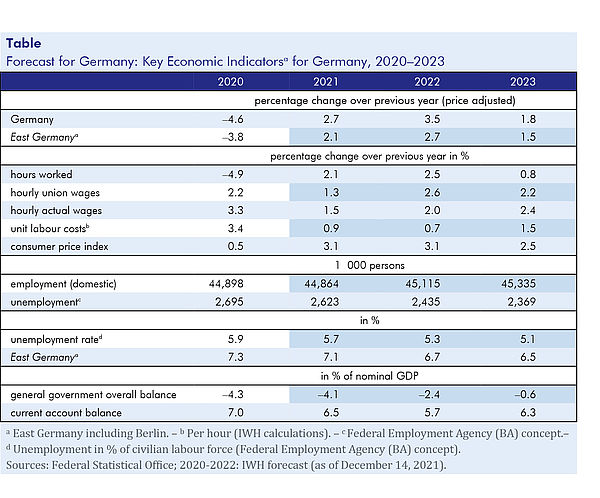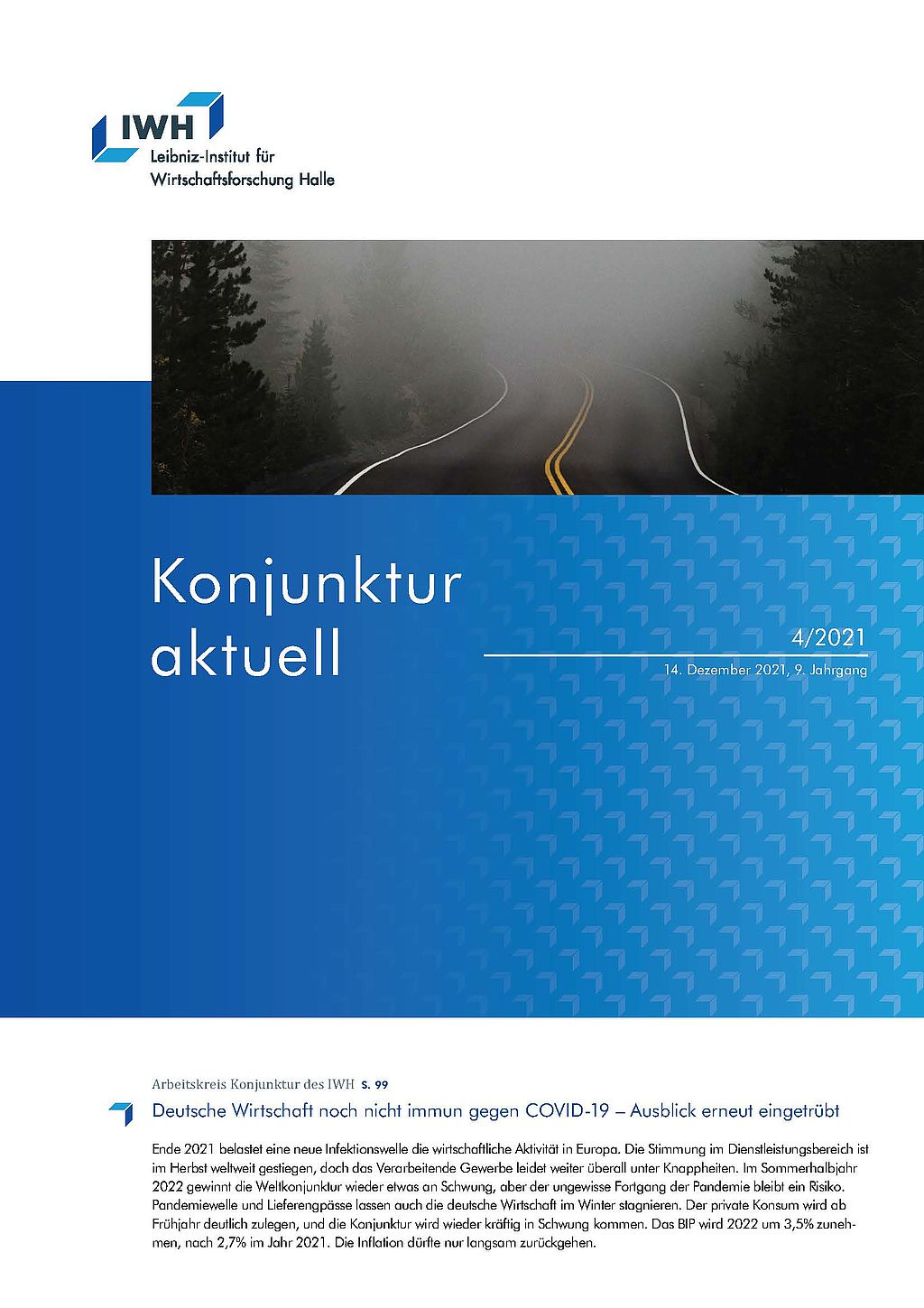German economy not yet immune to COVID 19 ‒ outlook clouded again

At the end of 2021, a new wave of infections is weighing on economic activity in Europe; in addition, the emergence of the new Omicron virus variant has dampened the economic outlook. In most other regions of the world, the number of COVID-19 deaths has been declining since the summer, and accordingly, sentiment in the services sector rose globally in autumn. However, the manufacturing sector continues to suffer from shortages of intermediate goods and high commodity prices everywhere. High inflation will prompt the US Federal Reserve, but not the European Central Bank (ECB) for the time being, to tighten monetary policy significantly, since wage growth has accelerated strongly in the USA, unlike in the euro area. In the first and the second quarter of 2022, the global economy is likely to gain some momentum as supply bottlenecks ease. However, the uncertain progress of the pandemic remains a major risk for the global economy in 2022.
During the summer, the recovery of private consumption triggered a strong expansion of German production, although production in the manufacturing sector declined, since German producers suffer particularly from the global supply bottlenecks. The pandemic wave in winter is a setback for the hospitality industry and, to a lesser extent, for the retail sector. However, containment measures will presumably not reach the extent of the lockdown of last winter, and the dampening effect on the economy is likely to be less than a year ago. Moreover, some indicators point to an end of the decline in manufacturing production in the final quarter of 2021. “From spring onwards, infection rates are likely to go down due to seasonal factors, and private consumption will again expand significantly”, says Oliver Holtemöller, head of the Department Macroeconomics and vice president at the IWH. In addition, very low financing costs continue to favour investment, especially in buildings, although the rapidly rising building costs show that the construction industry continues to produce at the limits of its capacity. Consumer price inflation, which is currently high as well, will decrease somewhat after the turn of the year, but will remain significantly higher than before the pandemic. This is because firms in the manufacturing sector will continue to have room for price increases and because wage dynamics will pick up, driven by the high number of vacancies and by the planned increases in the minimum wage.
According to Holtemöller, the uncertain course of the pandemic is still the main risk for the German economy. Restrictions will be gradually tightened until the infection figures drop significantly. In case of a severe winter lockdown such as a year ago, a similarly significant drop in production would have to be expected. “Economic developments for the rest of the year will largely depend on how controllable the Omikron virus variant will be”, says the economist, “and finally there is the possibility of new variants spreading.”
The extended version of the forecast (Konjunktur aktuell: Deutsche Wirtschaft noch nicht immun gegen COVID-19 – Ausblick erneut eingetrübt) contains a box on the estimation of potential output (in German).
Publication: Brautzsch, Hans-Ulrich; Drygalla, Andrej; Exß, Franziska; Heinisch, Katja; Holtemöller, Oliver; Kämpfe, Martina; Kozyrev, Boris; Lindner, Axel; Müller, Isabella; Schultz, Birgit; Staffa, Ruben; Zeddies, Götz: Deutsche Wirtschaft noch nicht immun gegen COVID-19 – Ausblick erneut eingetrübt, in: IWH, IWH, Konjunktur aktuell, Jg. 9 (4), 2021. Halle (Saale) 2021.
Whom to contact
For Researchers

Vice President Department Head
If you have any further questions please contact me.
+49 345 7753-800 Request per E-MailFor Journalists

Head of Public Relations
If you have any further questions please contact me.
+49 345 7753-720 Request per E-MailIWH list of experts
The IWH list of experts provides an overview of IWH research topics and the researchers and scientists in these areas. The relevant experts for the topics listed there can be reached for questions as usual through the IWH Press Office.
Related Publications

Konjunktur aktuell: Deutsche Wirtschaft noch nicht immun gegen COVID 19 – Ausblick erneut eingetrübt
in: Konjunktur aktuell, 4, 2021
Abstract
Ende 2021 belastet eine neue Infektionswelle die wirtschaftliche Aktivität in Europa. Die Stimmung im Dienstleistungsbereich ist im Herbst weltweit gestiegen, doch das Verarbeitende Gewerbe leidet weiter überall unter Knappheiten. Im Sommerhalbjahr 2022 gewinnt die Weltkonjunktur wieder etwas an Schwung, aber der ungewisse Fortgang der Pandemie bleibt ein Risiko. Pandemiewelle und Lieferengpässe lassen auch die deutsche Wirtschaft im Winter stagnieren. Der private Konsum wird ab Frühjahr deutlich zulegen, und die Konjunktur wird wieder kräftig in Schwung kommen. Das BIP wird 2022 um 3,5% zunehmen, nach 2,7% im Jahr 2021. Die Inflation dürfte nur langsam zurückgehen.



